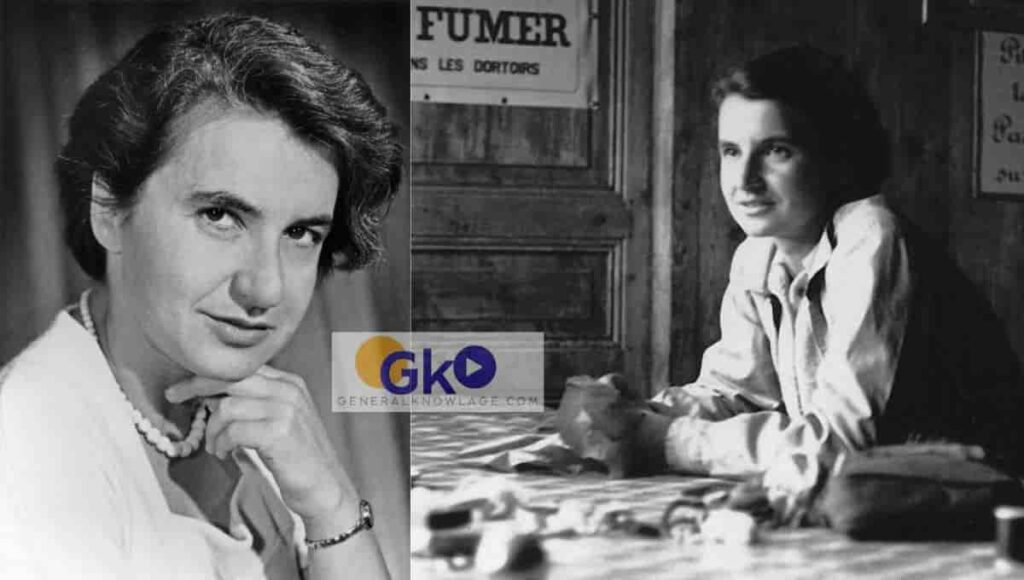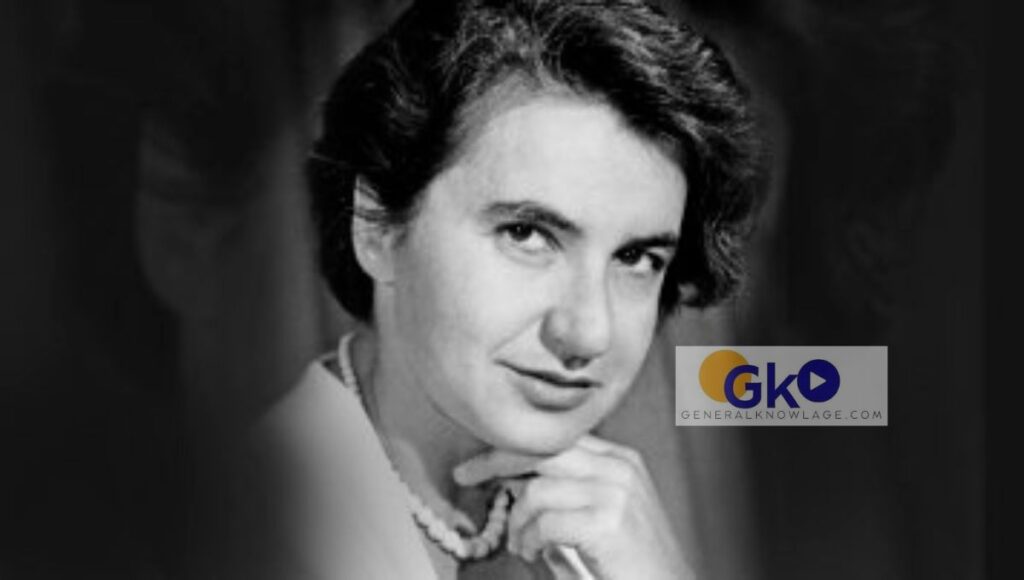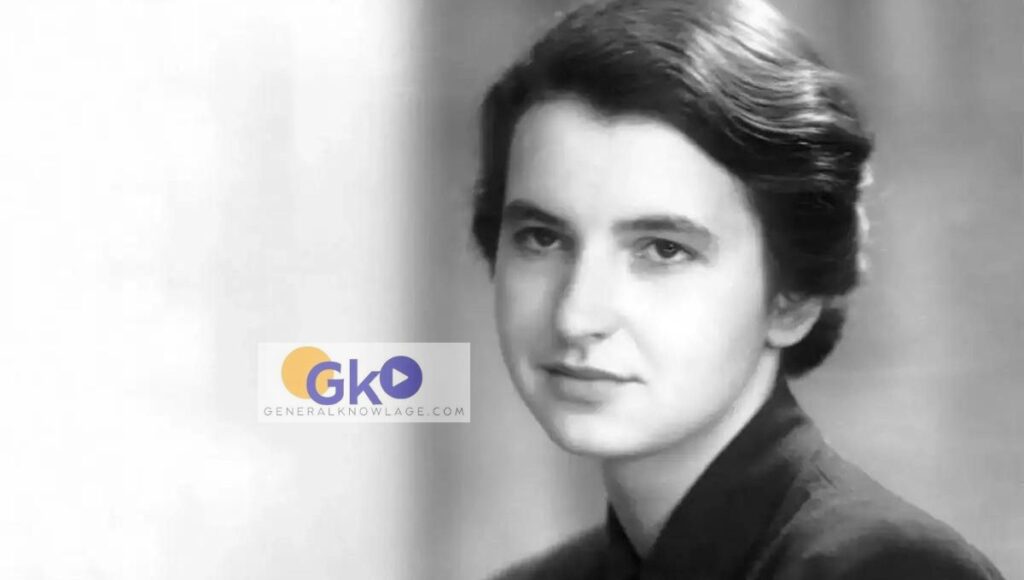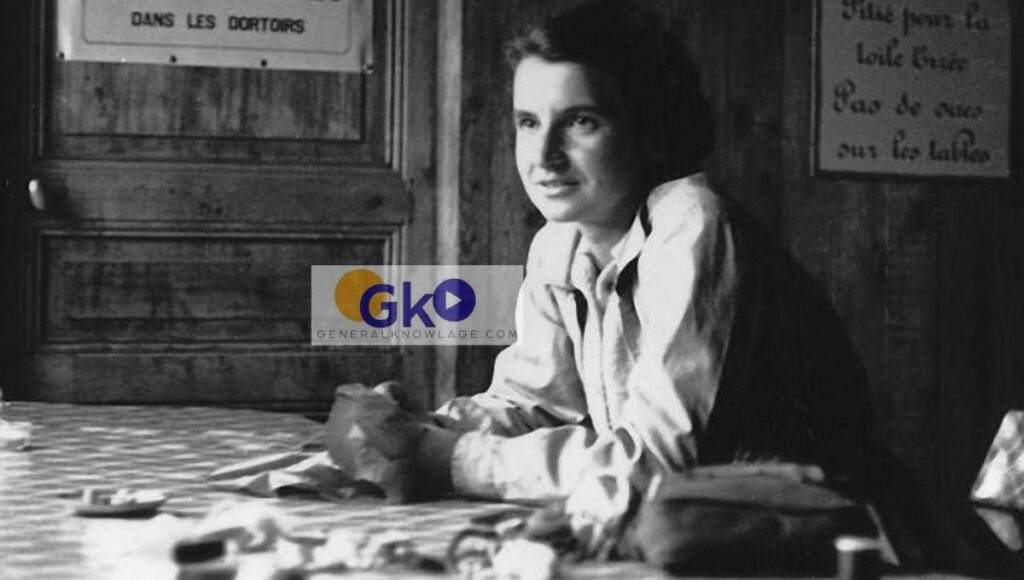Rosalind Franklin Wiki, Wikipedia, Biography, Early Life, Childhood, Cause of Death, Education
Rosalind Franklin Wiki, Wikipedia, Biography, Early Life, Childhood, Cause of Death, Education -: Rosalind Franklin is a brilliant British scientist, who has left an indelible mark on the world of science despite her tragically short life. Let’s derive into her remarkable journey, from her early life to her enduring scientific contributions.

Rosalind Franklin Bio
| Name | Rosalind Franklin |
|---|---|
| Age | 37 |
| Date of Birth | July 25, 1920 |
| Ethnicity | British |
| Education | PhD in Physical Chemistry from the University of Cambridge |
| Nationality | British |
| Marriage | Unmarried |
| Affairs | No documented affairs |
| Relationships | Family-focused, collaborative professional relationships |
| Birthplace | Notting Hill, London, United Kingdom |

Rosalind Franklin Early Life
Rosalind Franklin was born on July 25, 1920, in Notting Hill, London. Rosalind Elsie Franklin has displayed remarkable intelligence from a very young age. Her early years have been marked by a keen interest in academics and sports. She attended St. Paul’s Girls’ School, where her prowess in science and languages shone through.
Rosalind Franklin Education and Qualifications
Franklin’s academic journey was distinguished by her dedication and excellence. After completing her schooling, she pursued a degree in physical chemistry at Newnham College, University of Cambridge. Her doctoral research focused on the physical chemistry of solid organic colloids, earning her a Ph.D. from the University of Cambridge in 1945. Throughout her studies, Franklin’s inquisitive mind and passion for science propelled her forward, setting the stage for her groundbreaking discoveries.
| Schooling | Norland Place School, West London (age 6-9) Lindores School for Young Ladies, Sussex (age 9-11) St. Paul’s Girls’ School, Hammersmith, London (age 11-18) |
| University | Newnham College, University of Cambridge |
| Degree | Degree in Physical Chemistry |
| Doctorate | Ph.D. from the University of Cambridge (1945) |
| Thesis | The physical chemistry of solid organic colloids with special reference to coal |
| Doctoral Students | John Finch |
| Kenneth Holmes |
Rosalind Franklin Family Background
Rosalind Franklin was born in loving and a very supportive family. Her parents, Muriel Frances Waley and Ellis Arthur Franklin fostered an environment conducive to academic pursuit. Franklin’s siblings, including brothers Roland, Colin, and David, and sister Jenifer Glynn, have contributed to and have supported the growth of Rosalind Franklin.
| Family Member | Details |
|---|---|
| Parents | Muriel Frances Waley, Ellis Arthur Franklin |
| Siblings | Roland Franklin, Colin Franklin, Jenifer Glynn, David Franklin |

Rosalind Franklin Relationships
While Franklin’s professional life was marked by collaboration and scientific camaraderie, her personal relationships remain less documented. However, her interactions with colleagues and mentors undoubtedly shaped her scientific journey. Franklin’s commitment to her work and her collaborative spirit left a lasting impression on those she encountered in the scientific community.
Rosalind Franklin Career
Franklin’s illustrious career spanned diverse scientific disciplines, showcasing her versatility and ingenuity. After completing her doctoral studies, she embarked on a journey that led her to prestigious institutions such as the Laboratoire Central des Services Chimiques de l’État and King’s College London. Her tenure at King’s College, where she applied X-ray diffraction methods to study DNA, proved pivotal in unraveling the molecule’s helical structure. Subsequently, her research at Birkbeck College delved into the molecular architecture of viruses, contributing to the burgeoning field of structural virology.

Rosalind Franklin Cause of Death
Tragically, Rosalind Franklin’s promising career was cut short by illness. In 1956, she was diagnosed with ovarian cancer, yet she persevered in her research endeavors despite undergoing treatment. However, on April 16, 1958, at the age of 37, Franklin succumbed to cancer, leaving behind a scientific legacy that continues to inspire and inform contemporary research.
Facts About Rosalind Franklin
- Franklin’s contributions to DNA research were initially overshadowed, with James Watson and Francis Crick receiving the Nobel Prize in Physiology or Medicine in 1962 for their DNA model.
- Her meticulous X-ray diffraction images, including Photograph 51, provided crucial evidence for the helical structure of DNA.
- Franklin’s pioneering work on coal and graphite structure laid the groundwork for advancements in materials science and industrial applications.
- Despite facing discrimination and marginalization as a woman in science, Franklin’s unwavering dedication and intellectual prowess propelled her to the forefront of molecular biology.
Rosalind Franklin Social Media Accounts
| Click Here | |
| Click Here | |
| Click Here |
Conclusion
Rosalind Franklin’s legacy as a pioneering scientist and trailblazer for women in STEM remains unparalleled. Her relentless pursuit of scientific truth and her groundbreaking discoveries continue to shape our understanding of genetics, virology, and materials science. As we reflect on her remarkable life and contributions, let us honor her memory by championing diversity, equity, and inclusion in scientific endeavors, ensuring that her pioneering spirit endures for generations to come.
FAQ
What was Rosalind Franklin famous for?
Rosalind Franklin is best known for her pioneering work in elucidating the structure of DNA. Her use of X-ray diffraction techniques provided crucial evidence for the helical structure of DNA, laying the foundation for James Watson and Francis Crick’s double-helix model.
Did Rosalind Franklin discover DNA first?
No, Rosalind Franklin did not discover DNA first. While her research played a significant role in elucidating DNA’s structure, it was James Watson and Francis Crick who proposed the double-helix structure of DNA in 1953, based in part on Franklin’s X-ray diffraction data.
Did Rosalind Franklin get a Nobel Prize?
No, Rosalind Franklin did not receive a Nobel Prize for her contributions to the discovery of the structure of DNA. The Nobel Prize in Physiology or Medicine in 1962 was awarded to James Watson, Francis Crick, and Maurice Wilkins for their work on the molecular structure of nucleic acids and its significance for information transfer in living material.
What other contributions did Rosalind Franklin make to science?
Apart from her work on DNA, Rosalind Franklin made significant contributions to the study of viruses, particularly in elucidating their structural properties. Her research laid the groundwork for the field of structural virology.
What challenges did Rosalind Franklin face in her scientific career?
Rosalind Franklin faced gender discrimination and marginalization in the male-dominated scientific community of her time. Despite facing obstacles, she persevered and made groundbreaking contributions to molecular biology and materials science.
Also Read :

